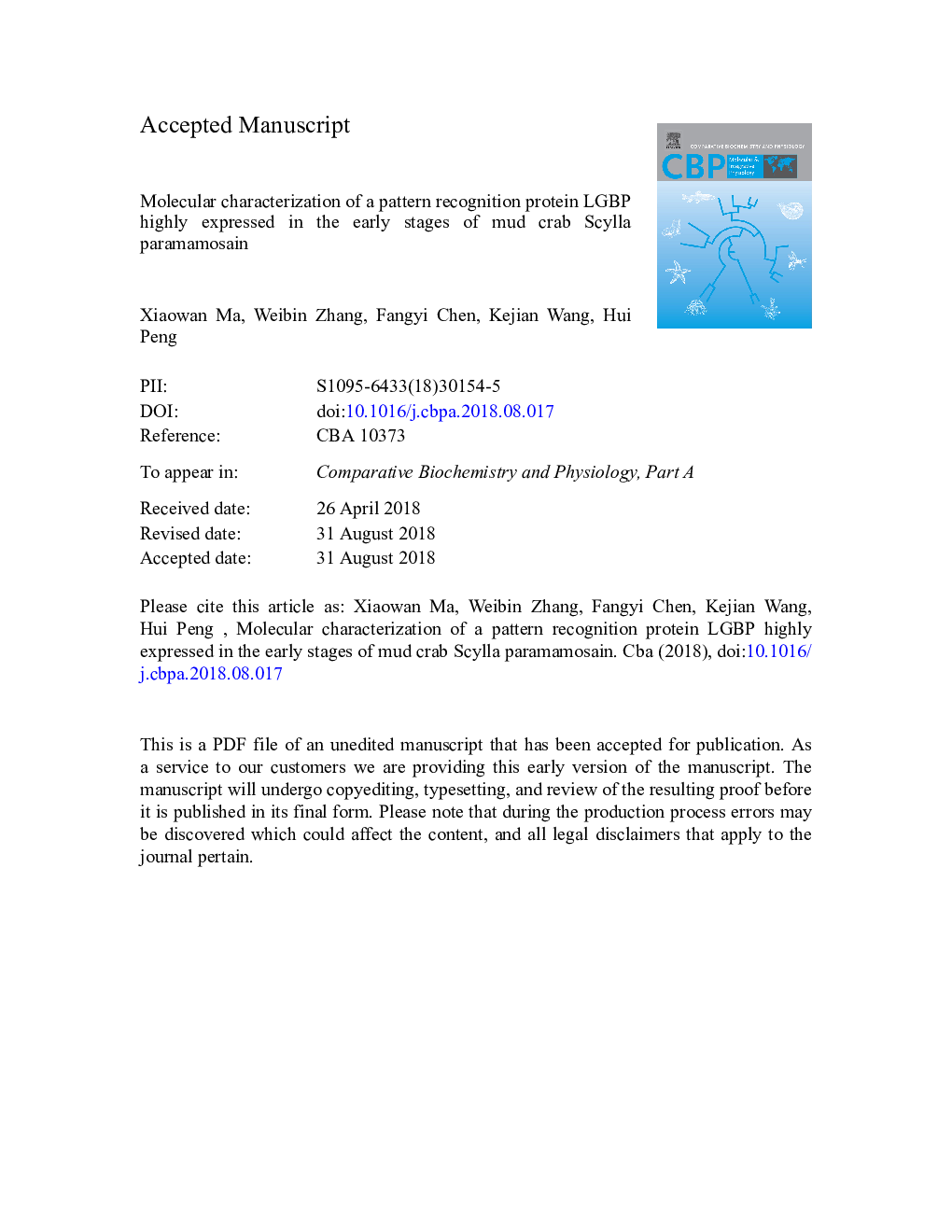| Article ID | Journal | Published Year | Pages | File Type |
|---|---|---|---|---|
| 10156819 | Comparative Biochemistry and Physiology Part A: Molecular & Integrative Physiology | 2019 | 26 Pages |
Abstract
The early developmental stages of the mud crab Scylla paramamosain suffer from high mortality caused by pathogen infections; however, few immune associated factors are known. Lipopolysaccharide and β-1,3-glucan-binding protein (LGBP) functions as a typical pathogen recognition receptor and plays an important role in the innate immune system of invertebrates. In this study we characterized a LGBP gene (SpLGBP) which was highly expressed in the late embryonic, zoea I larval stage and hepatopancreas of S. paramamosain.. It encodes 364 amino acids, composed of several conserved domains like the bacterial glucanase motif. The recombinant SpLGBP protein (rSpLGBP) was obtained through the E.coli expression system, in which two 6âHis-tags were added to both C and N terminals during vector construction for the improvement of purification efficiency. In vivo the study showed that the SpLGBP mRNA was significantly up-regulated under Vibrio parahaemolyticus and a lipopolysaccharide (LPS) challenge in the hemocytes and hepatopancreas. The ELISA binding assay in vitro indicated that the rSpLGBP was capable of binding to LPSs and peptidoglycan (PGN). The rSpLGBP could agglutinate both G+ and G- bacteria in the presence of Ca2+. Our results suggest that SpLGBP may play an immunological role against pathogenic infection in the early developmental stages of S. paramamosain.
Keywords
Related Topics
Life Sciences
Biochemistry, Genetics and Molecular Biology
Biochemistry
Authors
Xiaowan Ma, Weibin Zhang, Fangyi Chen, Kejian Wang, Hui Peng,
